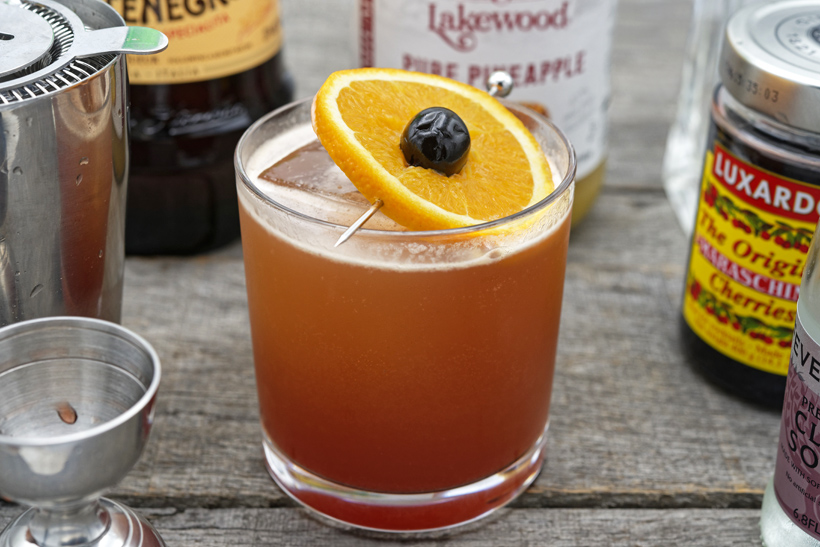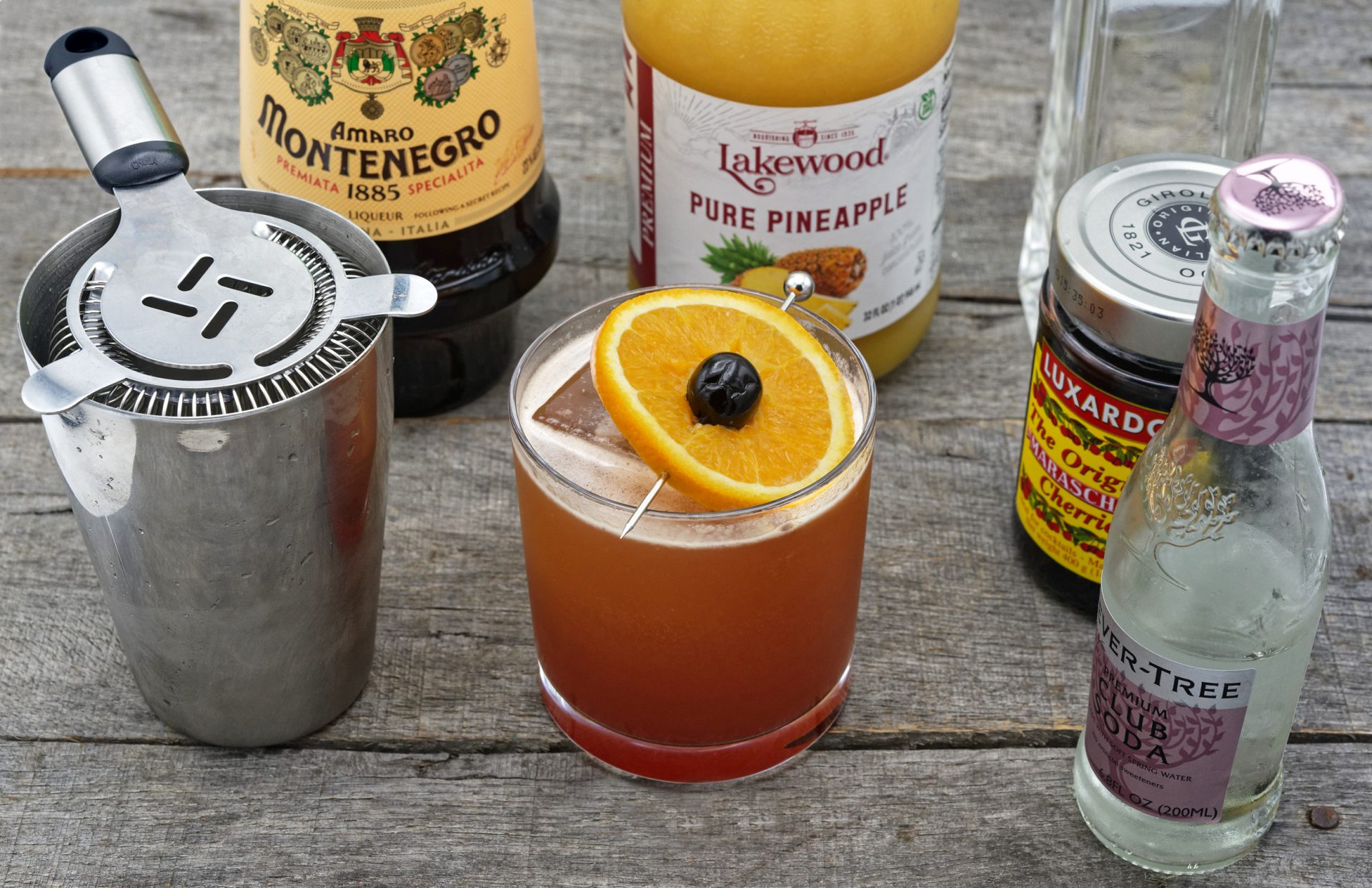How cheeky of me: I’ve told you the whole story of maraschino and Zadar liqueur production in my last post, but I still haven’t said anything about what those cherry liqueurs actually taste like! To make up for it, I’ve prepared a full comparative tasting and a few cocktails…
Maraschino tasting
For the maraschino tasting, I’ve lined up three contestants:
- Maraska, about which I talked so much in my last post. Since the ingredients are listed on the bottle’s label, I can tell you exactly what Maraska maraschino is made of, in decreasing order by weight: sugar, water, Marasca cherry distillate, alcohol, natural aromas. Nobody at the distillery mentioned these natural aromas to me during my visit! Otherwise, this confirms what’s already known from the E.U. Protected Geographical Indication: there’s a substantial amount of grain alcohol in this product. We also know that the sugar content must be between 300 and 360 g/l.
- Luxardo, the eternal rival exiled to Italy. I haven’t visited the distillery, but its marketing material claims the following: “When Luxardo Marasca cherries are harvested at the beginning of every summer, they are put in alcoholic infusion in larch-wood vats together with some leaves and branches of the same trees for up to three years. When ready, both the liquid and the solid parts are distilled in traditional copper pot stills, separating the heart from heads and tails. Only the heart of the distillate is then allowed to mature in ash-wood vats. The last process consists in transforming the distillate in liqueur by adding a simple syrup of water and sugar lowering the ABV to 32%.” While the bottle doesn’t list the ingredients, the above description suggests that they’re just cherry/leaf distillate, sugar, and water.
- Manda Maraschino, produced by the famous Bibich Winery in Skradin. Bibich actually makes two different maraschinos (the other one called Sv. Donat), but I don’t know what distinguishes one from the other. This one, Manda maraschino, isn’t a Zadar maraschino, although Skradin is technically located in the protected geographical area. The ingredients listed on the bottle are Marasca cherry distillate, Marasca cherry, sugar, water. The label also shows an alcohol content of 32% and a sugar content of 200 g /l. So compared to Maraska, it’s got no grain alcohol, significantly less sugar, and no natural flavors. It is unclear to me what role the Marasca cherry (the second ingredient in the list) plays: cherry distillate is already the main ingredient, and since the liqueur is clear, the cherries can’t have been macerated in it.
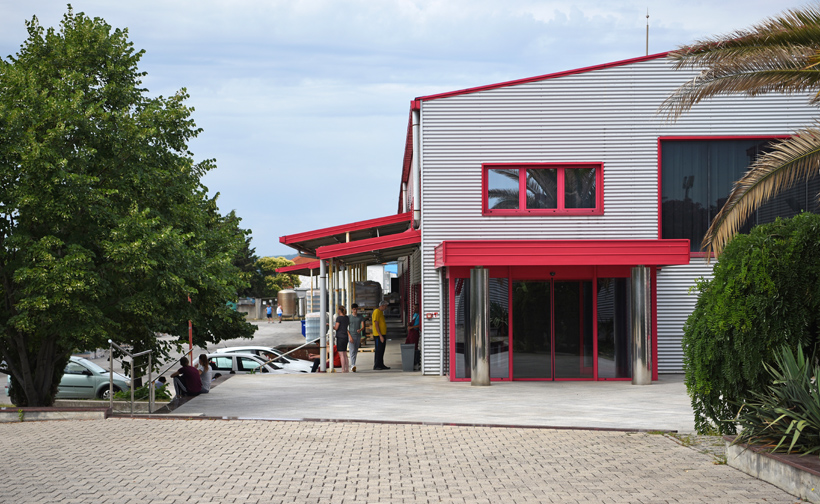
As a point of reference, here are the organoleptic characteristics of Zadar maraschino, as described in its Protected Geographical Indication document:
- Appearance: Zadar maraschino is a thick, colorless strong alcoholic beverage, characterized by crystalline transparency.
- Nose: A typical distinctive scent of Marasca cherry, without any strange smell. The scent is aromatic and refined. There is a mildly pronounced note of green twigs of Marasca cherry.
- Taste: The typical distinctive taste of Marasca cherry, which is characterized by sour-sweet notes and a slight bitterness.
Maraschino is best served chilled, neat. Maraska even recommends cooling it in the freezer to give it a thick, syrupy consistency. For the purpose of my tasting, however, serving it too cold would mask part of its aroma. I’ve tasted the three liqueurs twice, in blind tastings, with consistent observations. Here are the results!
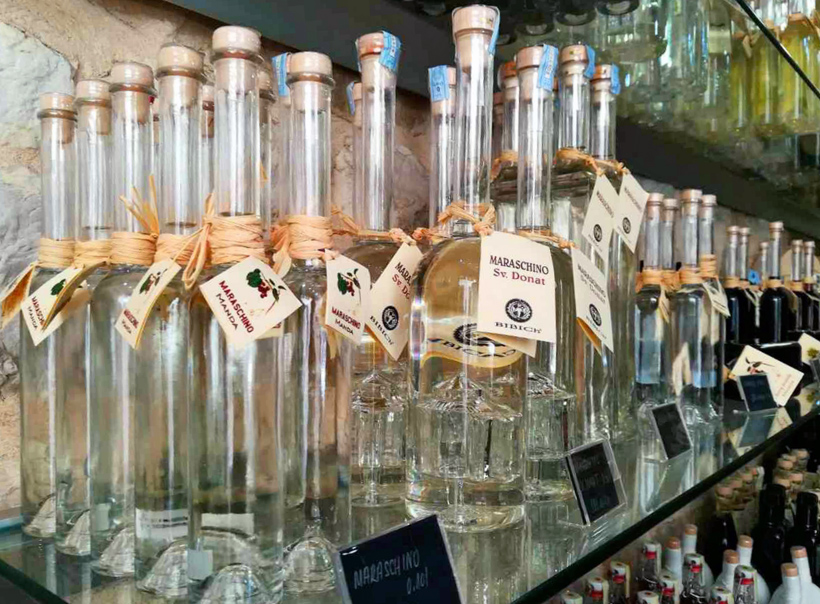
Bibich (Manda maraschino)
Nose: Clear smell of cherry, almost like a cocktail maraschino cherry. I don’t really smell cherry leaf; it’s possible that Bibich uses only the fruits.
Taste: Not as sweet as the other maraschinos in this tasting (though still very sweet), and tastes the most like cherry. It’s pretty close to a typical cherry brandy mixed with syrup. There might be other notes in the background but it’s hard to say what they are.

Maraska
Nose: Less pronounced than in the other two maraschinos, a pleasant combination of cherry and vegetal notes. True to the characteristics mandated by the PGI.
Taste: Very sweet, mild but again with well-balanced cherry and vegetal flavors. The distillation of the leaves and stems clearly plays an important role. Not your typical cherry liqueur, for sure.
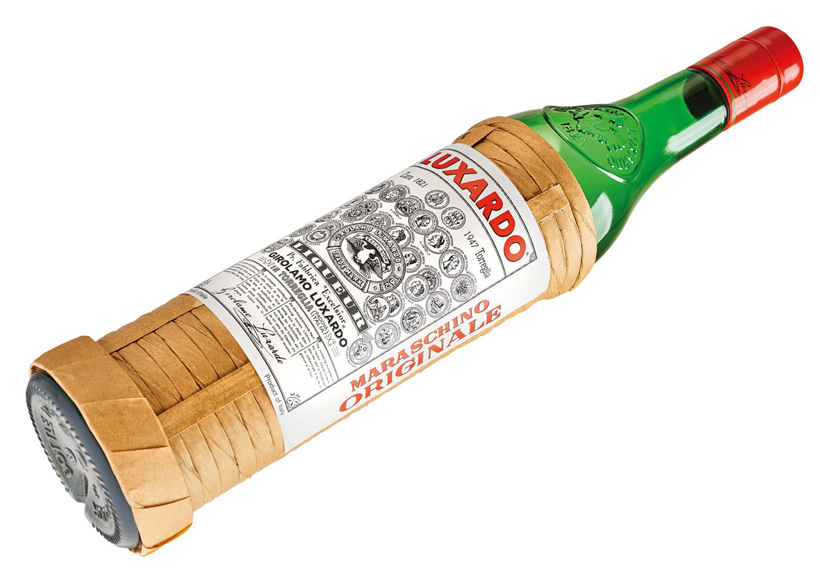
Luxardo
Nose: A bit aggressive, mostly vegetable notes and a slightly sour smell. It’s at the complete opposite end of the spectrum from the Manda maraschino – I don’t smell cherry at all! Now I see why the writers of the application for Protected Geographical Indication felt the need to dictate that Zadar maraschino be “without any strange smell.”
Taste: Very sweet (though maybe less so than Maraska), a mix of tree branch and denatured alcohol, yet not totally unpleasant. I don’t really taste cherry; I wouldn’t have guessed it’s a cherry liqueur. A bit of an acquired taste.
And the winner is…
Maraska, with a but. This is the only maraschino I tasted that perfectly combines the smell and flavor of both cherries and cherry leaves. You could say that since the other competing maraschinos don’t have the Zadar maraschino PGI, they don’t need to have the same flavor profile. Still, since maraschino was indeed invented in Zadar, I consider the blend of cherry and leaf distillates as one of the liqueur’s defining principles. My “but” with the Maraska maraschino, however, is the excessive use of grain alcohol. You immediately notice that its aroma is more muted than in undiluted maraschinos. I understand that it makes Maraska cheaper to produce, but considering that nowadays the product brings more prestige than direct revenue, I don’t see the point of cutting costs. At the very least, why not make a deluxe version containing no grain alcohol at all?
(Fun Fact: I also tried mixing the three maraschinos, and the sum might have been better than any of the parts!)
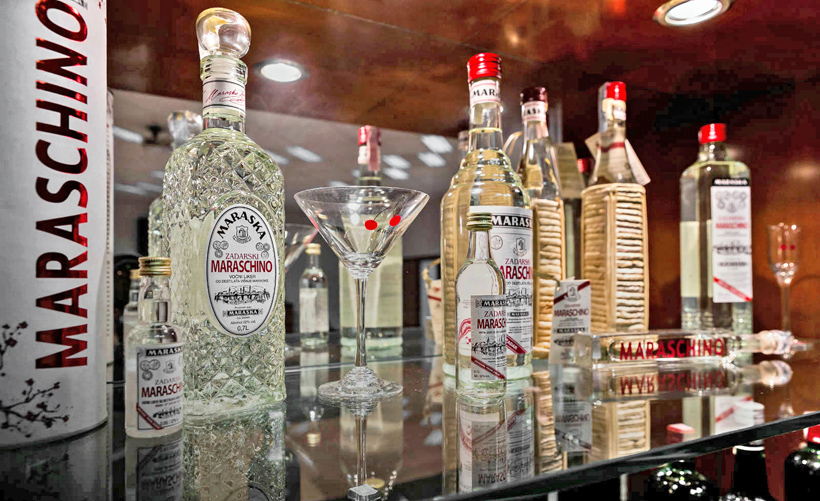
Cherry liqueur tasting
This tasting is a bit less thorough: I’m only comparing two products, both from Maraska. I’ve already mentioned that Maraska produces several cherry liqueurs in addition to maraschino. Unlike Zadar’s favorite child, they’re meant to deliver straight cherry flavor. Dozens of countries product similar products, but I wanted to gauge the difference between two Maraska offerings specifically:
- The traditional Cherry Brandy Liqueur. My host at the distillery called it “alcoholized cherry juice,” and it’s been produced since the 19th century. This isn’t really a brandy in the usual sense, i.e. a fruit distillate or eau de vie. The ingredients are once again conveniently listed on the bottle: sugar, water, alcohol, Marasca cherry juice, Marasca cherry distillate, natural aromas. 31% alcohol.
- The Amarena višnjevac (cherry liqueur). A new product that’s supposed to taste more like raw cherries. The Amarena cherry is a cousin of the Marasca cherry, but here the name of the cultivar is being used just because marketing liked the sound of it. With an alcohol content of only 21%, this is a much milder product targeting a younger generation. No ingredients printed on the bottle.
Time to see how they measure up!

Amarena Cherry Liqueur
Both the nose and taste really evoke fresh cherry, with alcohol. It’s a very straightforward product, but what’s not to love? You can really taste the freshness of the cherry, and it’s not overly sweet. Probably a great pick for a beach cocktail.

Cherry Brandy Liqueur
On the nose, it’s more like an old jar of cherries macerated in brandy with sugar – hence the name, maybe? I don’t smell the fresh fruit. It’s definitely more old school, perhaps more complex because the flavors are more blended, but to the detriment of the raw cherry flavor. On the palate, I taste cooked fruit, and this liqueur is sweeter than the Amarena. I find it quite enjoyable neat, chilled. It could be a mixologist’s best friend, as it would probably work great in a super-strong bitter cocktail served in a small coupe.
It’s difficult to choose one liqueur over the other, as they’re two very different products. Once again, I tried blending them and found the result to be quite nice. The mix really highlights the best of both worlds: notes of fresh cherries, but with some complexity. There’s an idea for you, Maraska!
Cocktails
If mixology is just burgeoning in Croatia, maraschino and cherry liqueurs have long been cocktail staples around the world. For maraschino, just check out this list, from which the Aviation and the Last Word are the best known. As for regular cherry liqueur, there are the Blood and Sand and the Singapore Sling.
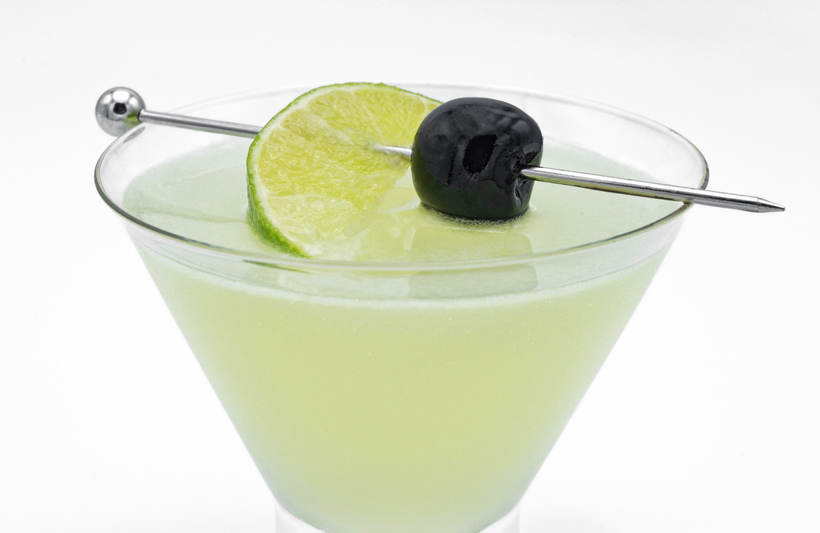
Here are a few of my creations, some based on existing recipes where I added a Croatian twist, and some entirely new concoctions, also with a strong Croatian connection:
- The Posljednje Slovo is my Croatian version of the Last Word (slovo means letter in Croatian, not word like in several other Slavic languages; I chose slovo because etymologically, it’s related to the word Slav). I replaced the original gin with rakija (pomace brandy similar to grappa), and I’m using Zadar maraschino, of course. This is a great cocktail to start with, but I think the gin substitution is an improvement, as it makes the cocktail slightly less bitter and herbal.
- The Zadar Sling belongs to the sling family – cocktails made with sugar, water (sometimes sparkling), and a spirit, although some veer off significantly, like the Singapore Sling. My sling is inspired by the latter, but with more Croatian ingredients and only a small amount of juice. Since Maraska Amaro isn’t readily available, I’m using Montenegro Amaro, which is produced in Italy but at least preserves the Dalmatian vibe in its name. Note that different brands of Amaro can have pretty different tastes.
- The Dalmatian Spritz is my own invention entirely. It combines both Zadar maraschino and green walnut liqueur (if you can’t find Maraska’s Orahovac, try an Italian nocino or the Nux Alpina Walnut Liqueur made by Purkhart in Austria). I’ve already mentioned in my Dalmatian Kremšnita recipe that carob is widespread throughout Dalmatia, and in this cocktail I’m adding a carob syrup (available from many online sources) as well, reasoning that cherry, walnut, and chocolatey carob would replicate a classic dessert pairing. Then I just top it off with sparkling wine, since everybody loves a good bubbly with dessert.
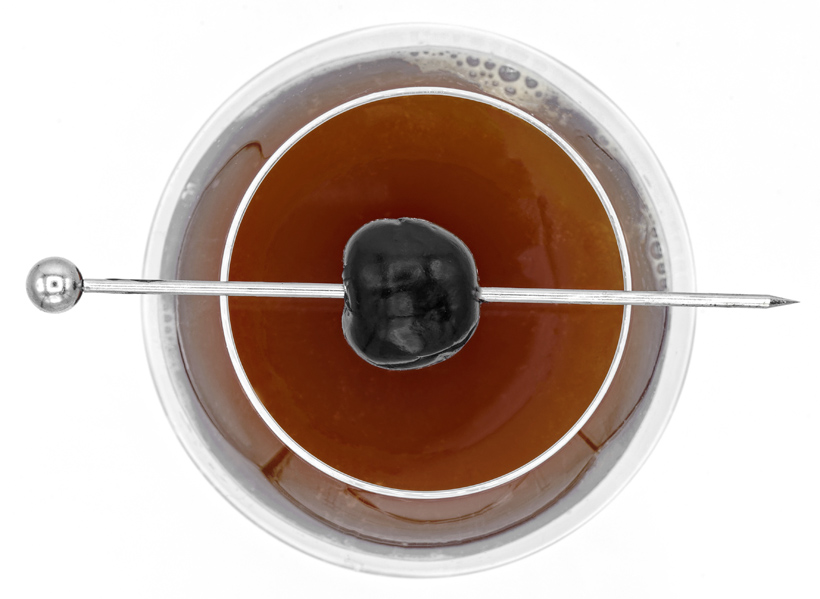
I’m no bartender, but I hope you’ll enjoy drinking these cocktails as much as I enjoyed creating them. Oh, why can’t my day job require that I consume half a dozen drinks every day just to tweak proportions and shoot pretty pictures?
Posljednje Slovo
Yields 1 drink
15 ml / 0.5 fl oz rakija or grappa
22.5 ml / 0.75 fl oz green Chartreuse
22.5 ml / 0.75 fl oz Zadar maraschino
22.5 ml / 0.75 fl oz lime juice
garnishes: small lime wedge, maraschino cherry
- Pour the rakija, green Chartreuse, maraschino, and lime juice into a shaker filled with ice cubes. Shake well, then strain into a 150 ml / 5 fl oz martini glass or coupe.
- Skewer the lime wedge and cherry on a cocktail pick, and place across the top of the glass.
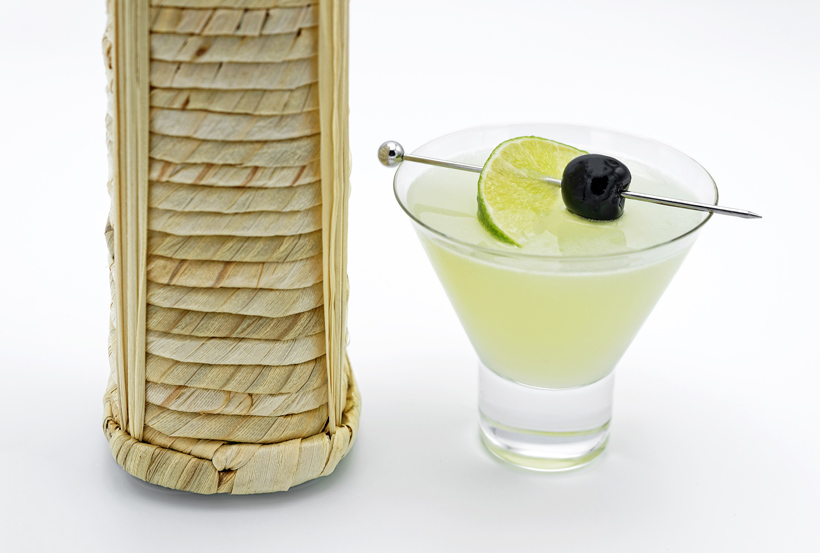
Dalmatian Spritz
Yields 1 drink
15 ml / 0.5 fl oz green walnut liqueur
15 ml / 0.5 fl oz Zadar maraschino
5 ml / 1 tsp carob syrup
5 ml / 1tsp lemon juice
105 ml / 3.5 fl oz dry sparkling wine
garnish: maraschino cherry
- Pour the walnut liqueur, maraschino, carob syrup, and lemon juice into a shaker filled with ice cubes. Shake well, then strain into a 400 ml / 14 fl oz champagne tulip glass. Finish with the sparkling wine.
- Decorate with the maraschino cherry on a skewer.
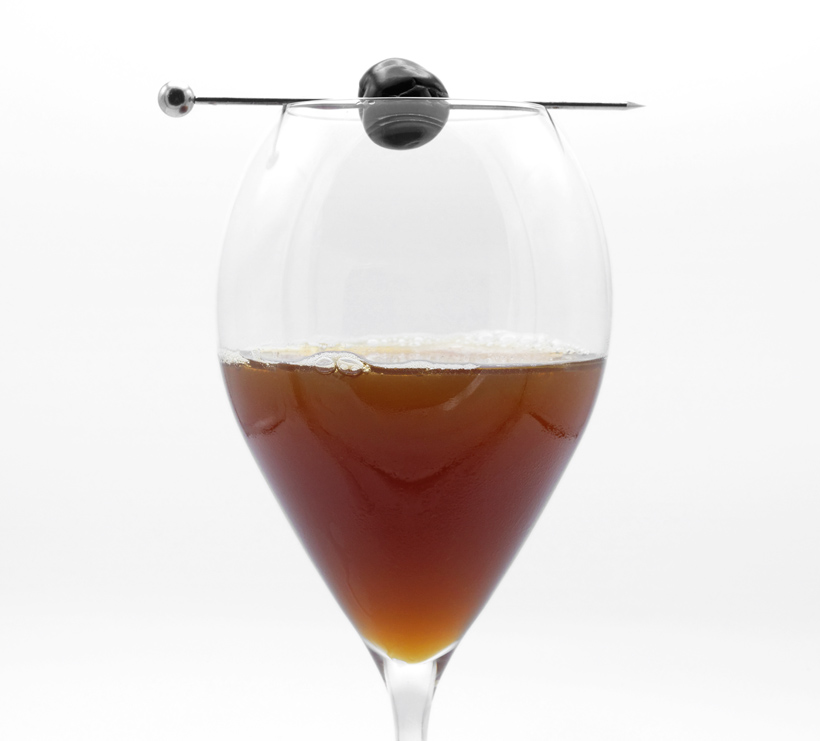
Zadar Sling
Yields 1 drink
30 ml / 1 oz rakija or grappa
30 ml / 1 oz Montenegro Amaro
30 ml / 1 oz cherry brandy liqueur
30 ml / 1 oz pineapple juice
15 ml / 0.5 oz lemon juice
90 ml / 3 oz club soda, to top
garnishes: big square ice cube, orange wheel, maraschino cherry
- Pour the rakija, Amaro, cherry brandy liqueur, pineapple juice, and lemon juice into a shaker filled with ice cubes. Shake well, then strain into a 400 ml / 14 fl oz highball glass with a big square ice cube, and top with the club soda.
- Skewer the orange wheel and cherry on a cocktail pick, and place across the top of the glass.
- As an alternative, instead of mixing the cherry liqueur with the other ingredients, you can pour it on the back of a spoon at the very end to obtain a nice red gradient.
